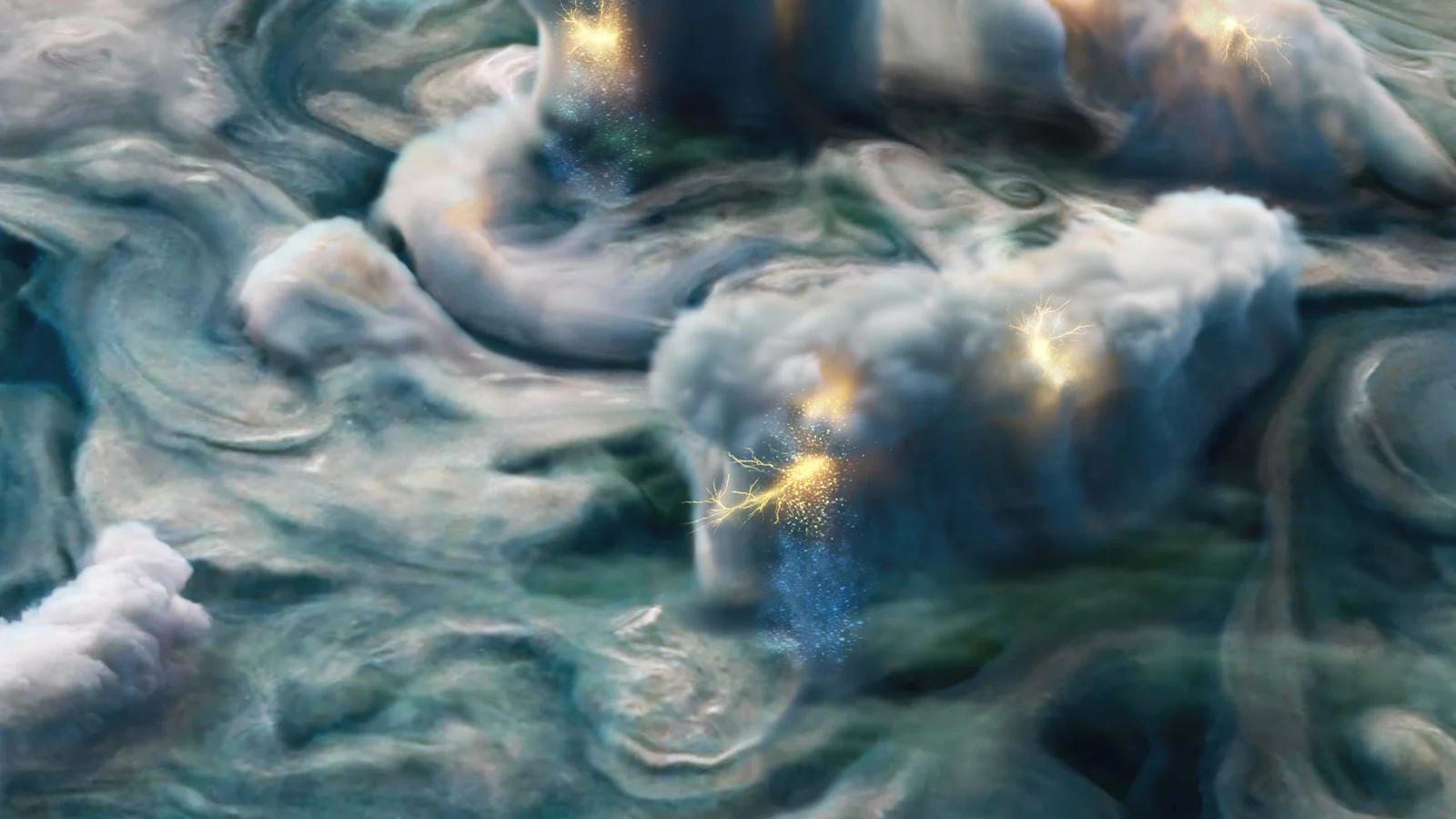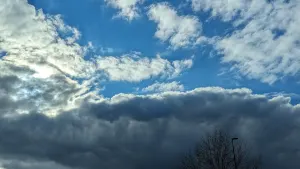
Antifreeze is key for sparking exotic 'shallow lightning' on Jupiter
NASA's Juno spacecraft spotted lightning on Jupiter where it shouldn't have been
Strange, unexpected lightning flashes were spotted among Jupiter's cloud by the Juno spacecraft. Scientists now have an explanation for this unusual feature of the gas giant's meteorology.
Jupiter's swirling cloud bands are home to countless thunderstorms, which produce a near-continuous supply of lightning. From what scientists have learned so far about the planet, they had concluded that all of Jupiter's lightning must be sparked deep under the cloud tops, roughly 50 kilometres down.
At that depth, temperatures in Jupiter's atmosphere are just right to form the same kind of storm clouds typically found here on Earth. These are clouds composed of water droplets, with temperatures around the freezing mark near the bottom of the storm, and well below freezing at the top. In this environment, ice crystals rising on updrafts brush against slushy snow pellets falling in the downdrafts. This results in the exchange of charges needed to electrify the cloud and produce flashes of lightning.
Higher up in Jupiter's atmosphere, closer to the cloud tops, it's just too cold for lightning. If any water is lofted to those altitudes, the temperature there should freeze all of it solid. In that state, there would be no exchange of charge between ice crystals. Everything would remain balanced out, and as a result, there's no electrification of the cloud to spark a bolt of lightning.
In comes NASA's Juno spacecraft, though. Data recorded by the probe's Stellar Reference Unit camera has spotted lightning occurring exactly where it shouldn't have been.
"Juno's close flybys of the cloud tops allowed us to see something surprising – smaller, shallower flashes – originating at much higher altitudes in Jupiter's atmosphere than previously assumed possible," lead author Heidi Becker, Juno's Radiation Monitoring (RM) Investigation lead at NASA JPL, said in a NASA press release on Wednesday.

This illustration shows the different types of lightning detected in Jupiter's clouds. The blue-white flashes represent lightning from the deeper convective storms, while the yellow is 'shallow lightning' newly detected by Juno. Credit: NASA/JPL-Caltech/SwRI/MSSS/Gerald Eichstädt/Heidi N. Becker/Koji Kuramura
The key to figuring out how this lightning could be occurring was the ammonia found in the upper layers of Jupiter's atmosphere.
"At these altitudes, the ammonia acts like an antifreeze, lowering the melting point of water ice and allowing the formation of a cloud with ammonia-water liquid," Becker explained. "In this new state, falling droplets of ammonia-water liquid can collide with the upgoing water-ice crystals and electrify the clouds. This was a big surprise, as ammonia-water clouds do not exist on Earth."

In this diagram, a convective storm lofts water through the upper layers of Jupiter's atmosphere, where it mixes with ammonia. This keeps the water at the right temperature for lightning production. Unique Jupiter hailstones, known as 'mushballs', form as a result of these processes, which then fall out of the cloud into Jupiter's deeper layers. Credit: NASA/JPL-Caltech/SwRI/CNRS










